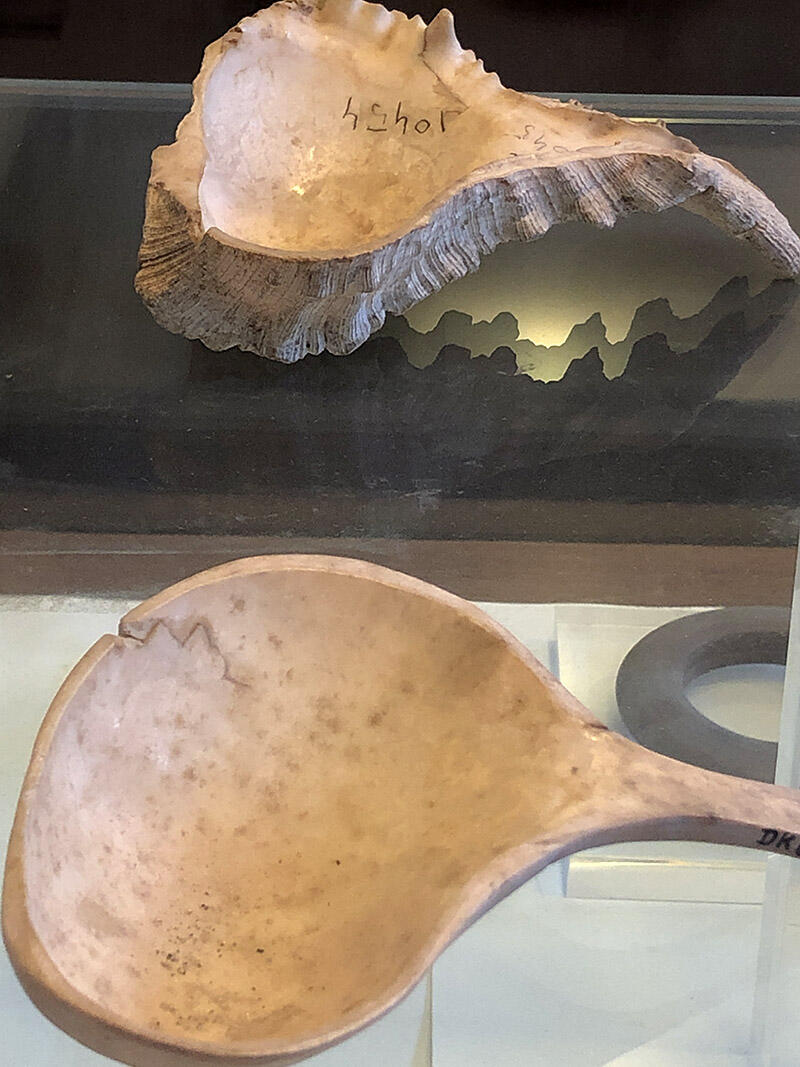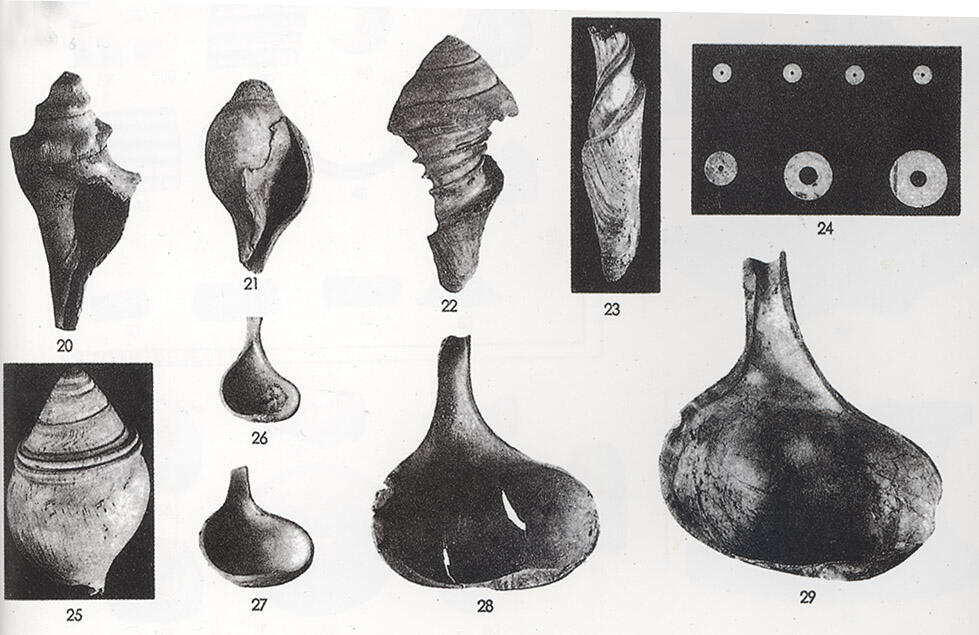Examples of one of the finest and most distinct of Indus craft objects. Dr. Kenoyer writes of a nearly identical ladle to the one in the foreground from Harappa (Ancient Cities, p. 110):
"Elaborately crafted objects such as shell ladles (fig. 6.37) and libation vessels (fig. 6.38) may have been used for pouring sacred offerings of water, milk, oil or butter. Shell ladles were made from the spiney murex shell, Chicoreus ramosus, that was collected from the waters of a Kutch or distant Oman. Coastal shellworkers cut and ground the shell to prepare a roughly shaped ladle. These unfinished
pieces were then traded to larger sites such as Harappa and Mohenjo-daro, for the final grinding and polishing. Fragments of finished shell ladles have been found at most Indus settlements, but only rarely is a complete ladle recovered, usually buried in a room or as a funerary offering. At Harappa, we found a large ladle that had been repaired with a lead rivet in one of the burials along with some pottery (fig. 6.37)."
Sir John Marshall writes on shell ladles (see Images 2 for his references, Mohenjo-daro, p. 471):
"The four ladles illustrated in Pl. CLVI are al made of shell. They vary considerably in size, the largest being 6-8 inches long.
"Each ladle was made from a single piece of shell and its size, therefore, was in a measure governed by the size of the shel from which it was cut [Footnote: Murex (chicoreus) ramosus, Linn. (Red Sea, Indian Ocean, etc.)]. These objects are naturally irregular in shape, but are otherwise well finished and finely polished. Very similar ladles were used in Mesopotamia in very early times.
"No. 26 (HR 2528) measures 2•58 inches long and is well preserved. It was found at the northern end of the main street (HR Area at a depth of 4 ft. 3 in. below the surface of the ground.
"No. 27 (SD 2617) is 3•55 inches long.
"No. 28 (SD 1407) measures 4•65 inches long, and was unearthed from a depth of 11 feet in Room 15, Block 4, Southern Buildings Section.
Southern Buildings Section.
"No. 29 (SD 951), measuring 6•8 inches long, came from Chambers 5 and 6, Block 3, Southern Buildings Section, where it was lying at a depth of 4 feet below the surface of the ground.
"It is possible that these spoon-like utensils were used for oblations and also for drinking from, especially the smaller sizes. [Footnote: They are used by Hindus at the present day in sacred ceremonials. The Sanskrit name for these dippers is argha]. An exact copy of one (HR 5673) in baked clay was found in the HR Area (PI. CXXXIII, 12). This copy is rather larger in size than the usual shell ladles, but it is doubtful whether one so large could have been made of shell for want of a shell of sufficient size [Footnote: Since writing this I have ascertained that some shells of this species attain a length of over a foot.]. The pottery model measures 6•5 inches long, including its handle, and is made of a well-kneaded clay, now light red in colour, that contains a little lime in the form of small particles. Even the slight thickening present on the edges of the shell ladles has been imitated in this pottery model. Found 6 feet below the surface in Passage 20, House XVIII, Block 4, HR Area.
"Shell ladles are found in both the Intermediate and Late levels at Mohenjo-daro, and they will probably be found to occur in the Early levels also."




